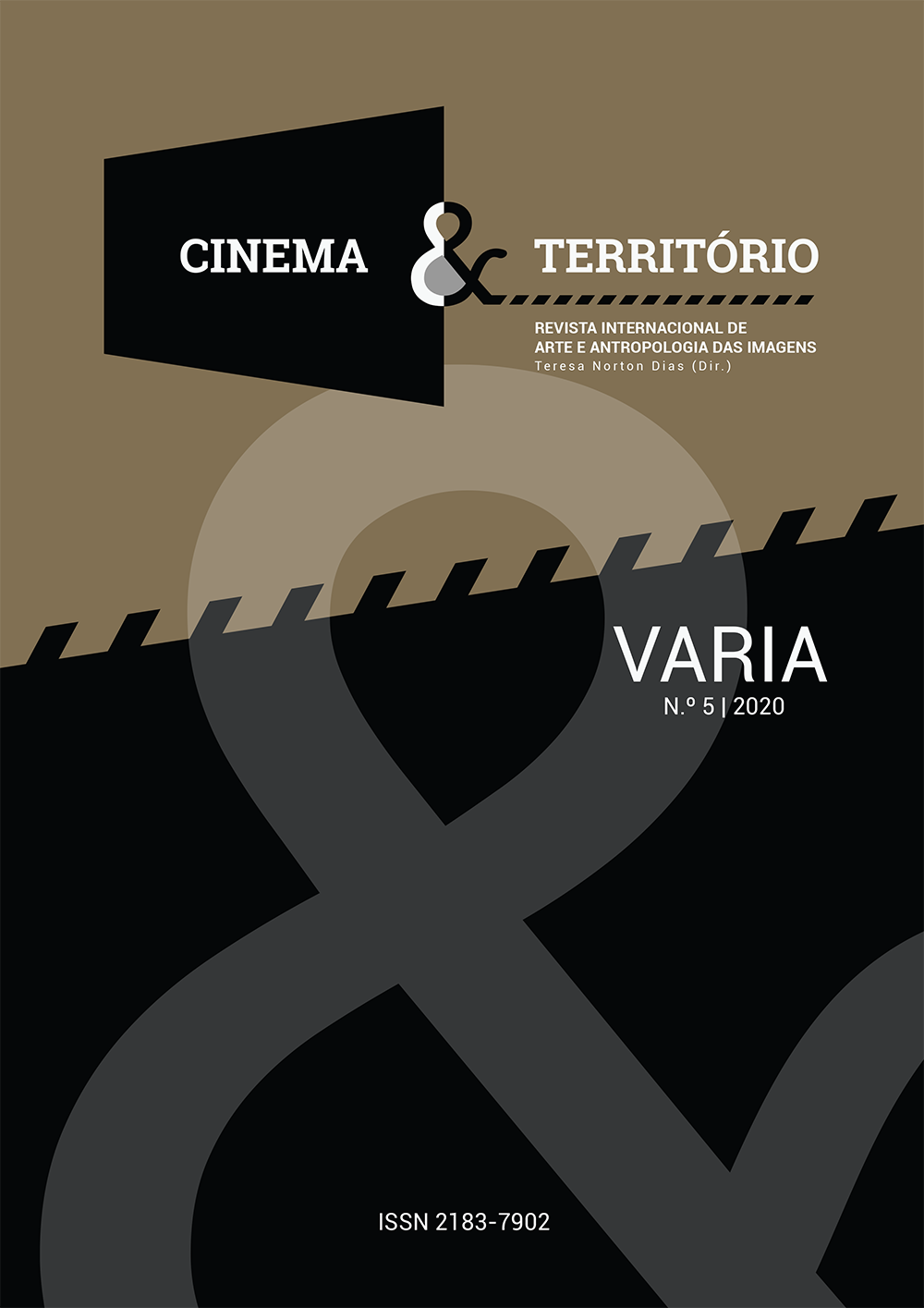The intellectual and the people: media, press and territory of Trás-os-Montes after the Revolution
DOI:
https://doi.org/10.34640/52020ctccintKeywords:
representation of the territory, aesthetics of materials, folklore, culture and peripheryAbstract
Throughout the history of Portuguese cinema there has been an analytic interest for closed communities outside the cities’ urban perimeter. However, from Leitão de Barros and his discovery of Nazaré, in the beginning of the last century, to António Reis and Margarida Cordeiro, in Trás-os-Montes, something changed in the representations of the territory and its uses. A historical and cultural contextualisation of the situation of the population who lived in that territory can help to better understand the passage from “folklore” to “memory”. The peculiar path of the film Trás-os-Montes (1976), by Reis and Cordeiro, shows the materialisation of poetry into images using the territory of the villages, their uses and costumes. This ethnofiction will consider the articles written at the time of the film’s premiere. Using the concept of Community preventive censure (Jakobson), this article aims to analyse the relation, created by the film in Trás-os-Montes, between the intellectual and the people.
References
Araújo, N. (2016). Cinema português. Interseções estéticas nas décadas de 60 a 80 do século XX. Lisboa: Edições 70.
Bogatyrëv, P.G. & Jakobson, R. (1929) [1967]. Die Folklore als eine besondere Form des Schaffens. Rivista di cultura e critica letteraria. Strumenti critici, nº3.
Bruno, G. (2014). Surface. Matters of aesthetic, materiality and media. Chicago/London: University of Chicago Press.
Calvino, I. (1996) [2019]. Le città invisibili. Milano: Mondadori Castro, Ilda Teresa (2014). António Reis e o espaço de um lugar - sintomatologias de Jaime”. Atas do III Encontro Anual da AIM, ISBN 978-989-98215-1-4.
Cucinotta, C. (2011). How do the costumes make the difference in ethno-fiction films: fishermen communities in Sicily and in Portugal. International Journal of Art and Science, vol.5, 03. New Britain/USA.
Cucinotta, C. (2016). António Reis e Margarida Cordeiro: se a Estética aproxima-se dos materiais, o ecrã transforma-se em poesia. Proposta para a teoria dos cineastas, Vol. 2. Covilhã: LabCom.
Cucinotta, C. (2018). Viagem ao cinema através do seu vestuário. Percursos de análises em filmes portugueses de etnoficção. Covilhã: LabCom.
Cucinotta, C. & Ramé, J. (2020). A produção como variável estética na construção formal do filme Os Verdes Anos a partir dos seus materiais. Aniki, Revista portuguesa da imagem em movimento, v. 7, n. 2.
Daney, S. (1977). Loin des Lois. Revista Cahiers du Cinéma, n.º 276 (pp. 42-44), maio de 1977.
Da Graça Lobo, M. & Moutinho, A. (1997). António Reis e Margarida Cordeiro. A poesia da terra. Cineclube de Faro.
- Belo, F. (1976, Junho 24) Gazetilha
- Da Costa, J. B. (1976, Junho 25) Expresso
- Machado, L. (1976, Agosto 11) A Luta
- Rodrigues R. (1976, Maio 4), Diário de Lisboa De Pina, L. (1976, junho 16) O Dia
Matos Silva, J. et. al. (1967). O ofício do cinema em Portugal, Documento do Lisboa: Centro Português de Cinema.
Natálio, C. & Vieira Lisboa, R. (2013). Máquinas, censuras e lugares do novo. Disponível em http://www.apaladewalsh.com/2013/05/maquinas-censura-e-oslugares-do-novo/ [6.5.2013]
Ramos Correia Martins, A.J. (2019). Cinema e poesia: aproximações à obra de António Reis, em Cadernos de literatura comparada. Disponível em: http:/dx.doi.org/10.21747/21832242/litcomp41a6 [acesso em 16/11/2020]
Filmografia
Cecchi Gori, M., Cecchi Gori, V., Daniele, G. (Produtores) & Redford, M. (Realizador).
(1994). O carteiro de Pablo Neruda. Itália/França/Bélgica: Miramax Films.
De Almeida, A., Mazeda, J. (Produtores) & Reis, A. Cordeiro, M. (Realizadores). (1989). Rosa de areia. Portugal.
Iberia Filmes Lda. (Produção) & Lupo, R. (Realizador). (1922). Mulheres da Beira. Portugal.
Invicta Filmes (Produção) & Lupo, R. (Realizador). (1923). Os lobos. Portugal.
Reis, A., Cordeiro M., Paulo, P. (Produtores) & Reis, A., Cordeiro M. (Realizadores). (1976). Trás-os-Montes. Portugal: V.O. Filmes.
Reis, A. & Cordeiro, M., Branco, P. (Produtores) & Reis, A., Cordeiro, M. (Realizadores). (1982). Ana. Portugal: Filme Filmes.
Rocha, P., Takano E. (Produtores) & Rocha, P. (Realizador). (1983/1991). A Ilha dos Amores. Portugal/Japão.
Salvo D'Angelo (Produtor) & Visconti, L. (Realizador). (1948). La terra trema. Italia: Compagnia Edizioni Internazionali Artistiche Distribuzione.
Sociedade Universal de Superfilmes (Produção) & De Barros, J. L. (Realizador). (1929). Maria do Mar. Portugal.
Tobis Portuguesa (Produção) & De Barros, J. L. (Realizador). (1942). Ala arriba! Portugal: Sonoro Filme e Internacional Filmes.
Downloads
Published
How to Cite
Issue
Section
License
Copyright (c) 2020 Caterina Cucinotta

This work is licensed under a Creative Commons Attribution-NonCommercial 4.0 International License.
For more information follow the link: CC Atribuição-NãoComercial 4.0








